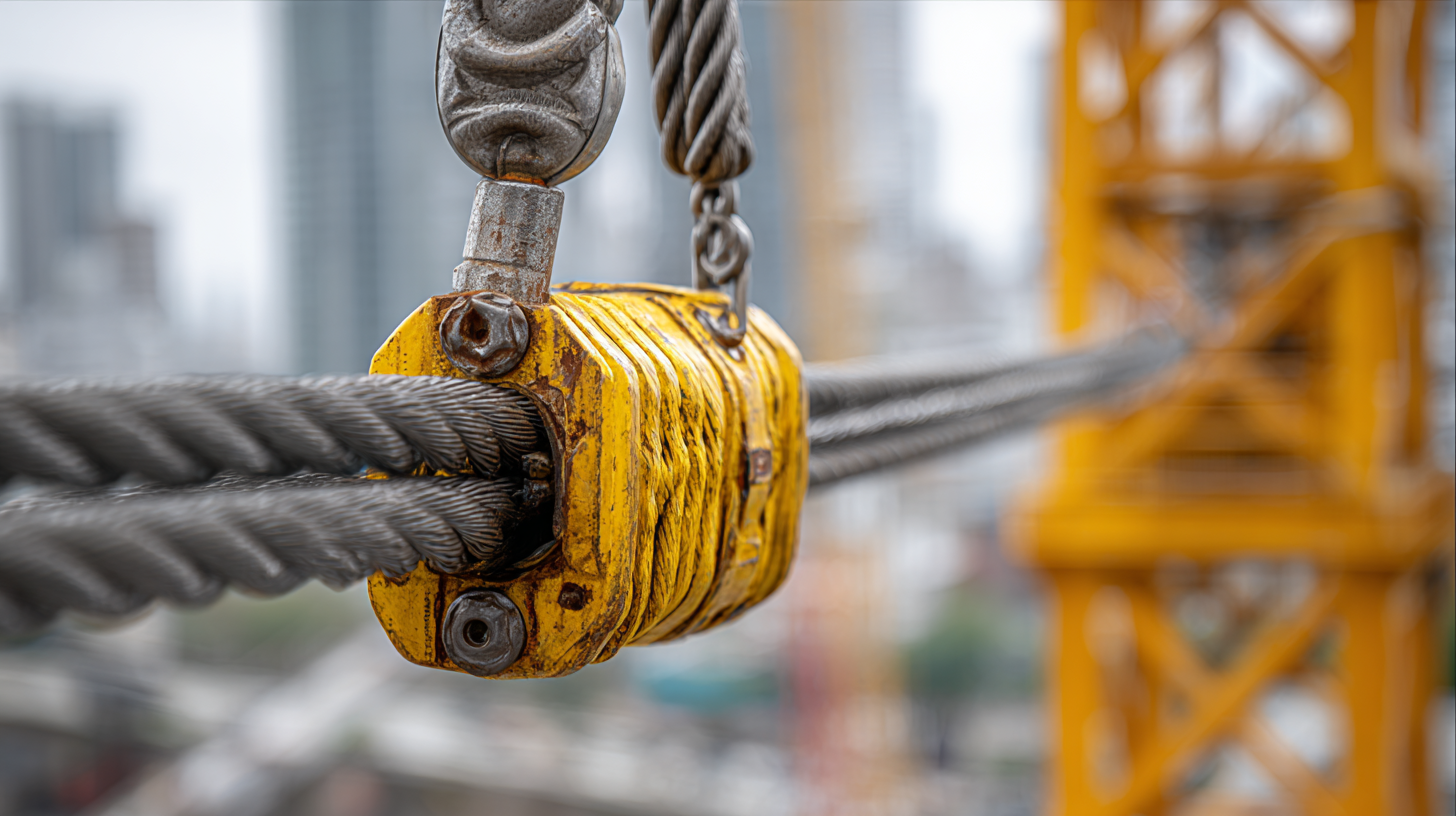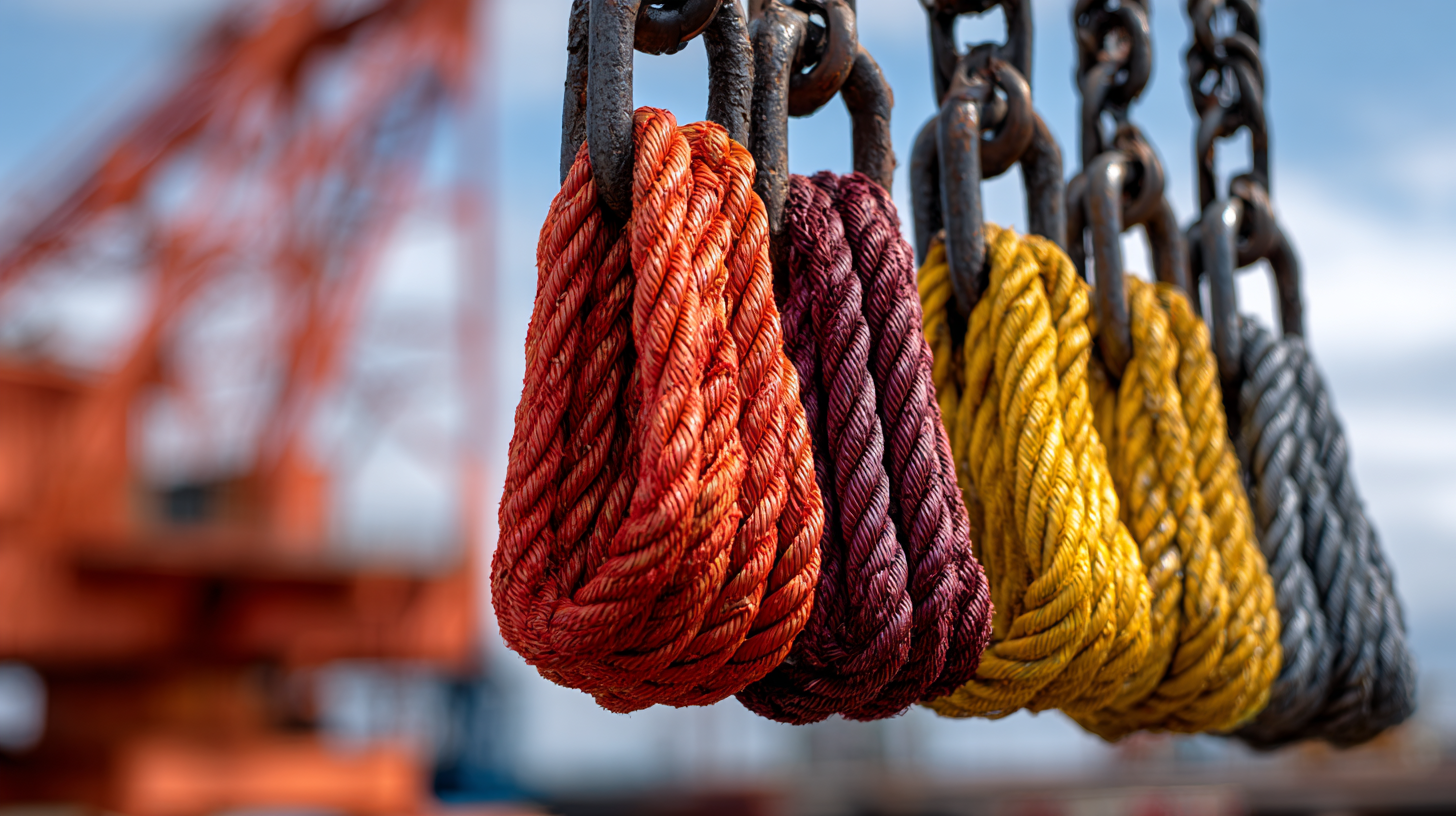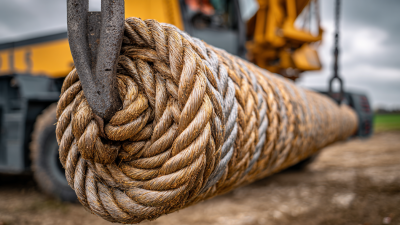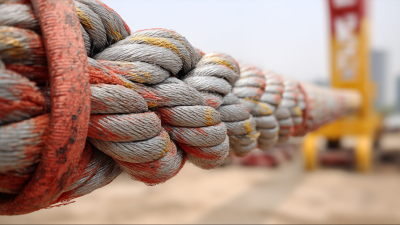5 Essential Tips for Choosing Lifting Ropes for Cranes: Maximize Safety and Efficiency with Industry Insights
Selecting the right lifting rope for cranes is crucial for maximizing safety and efficiency in construction and industrial operations. According to a recent industry report by the Occupational Safety and Health Administration (OSHA), improper use of lifting equipment is responsible for a significant percentage of workplace accidents, highlighting the importance of choosing high-quality lifting ropes. The global lifting equipment market is projected to reach $50 billion by 2025, indicating a growing emphasis on safety standards and innovations within the industry.

Lifting rope for cranes plays a pivotal role in ensuring seamless operations, as it directly impacts load handling capabilities and overall safety. A study conducted by the International Organization for Standardization (ISO) found that cranes equipped with high-quality lifting ropes can reduce the risk of load failure by up to 30%. As businesses strive to enhance performance while maintaining stringent safety protocols, understanding the essential factors in selecting the right lifting rope becomes paramount. In this article, we will explore five critical tips that combine industry insights and expert recommendations to help you make informed decisions when choosing lifting ropes for cranes.
Understanding the Importance of Rope Material in Crane Operations for Enhanced Safety
When it comes to crane operations, the material of the lifting rope plays a crucial role in enhancing safety and efficiency. Understanding the significance of rope materials can prevent accidents and reduce operational costs. Steel wire ropes have long been the industry standard, but advancements in materials like synthetic ropes are redefining safety parameters. These modern alternatives can offer lighter weight, higher flexibility, and resistance to wear, providing operators with more efficient lifting capability.
To maximize safety when selecting lifting ropes, consider the following tips:
- First, always prioritize the material's strength to ensure it can withstand the expected loads.
- Second, evaluate the environmental conditions where the crane will operate, as certain materials may perform better in specific conditions, such as extreme temperatures or exposure to chemicals.
- Lastly, invest in comprehensive training for personnel to understand the importance of choosing the right rope and how to inspect it regularly for wear and damage.
By adhering to these guidelines, operators can significantly reduce risks and enhance overall safety in crane operations.
Evaluating Load Capacity and Working Load Limit for Optimal Lifting Performance
When selecting lifting ropes for cranes, understanding load capacity and working load limit (WLL) is crucial for optimal lifting performance. The load capacity refers to the maximum weight a rope can handle without failing, while the WLL provides a safety margin, ensuring that the rope can safely manage a specified load under normal operating conditions. It is essential to choose ropes that not only meet but exceed the expected load demands to account for dynamic forces and potential wear over time.
Evaluating these factors begins with a comprehensive assessment of the crane’s operational requirements, including the types of loads being lifted and the working environment. Consider variables such as the frequency of lifting, environmental conditions (such as exposure to chemicals or extreme temperatures), and the height from which loads will be lifted. By understanding these elements, operators can select ropes with appropriate tensile strength and flexibility, ultimately maximizing safety and efficiency during operations. Ensuring compatibility between the crane and the lifting rope, along with regular inspections and maintenance, is key to maintaining consistent performance and mitigating risks associated with lifting operations.
Load Capacity and Working Load Limit for Crane Lifting Ropes
This chart illustrates the load capacities and working load limits of different types of lifting ropes. Ensuring that the chosen lifting rope has an appropriate load capacity in relation to its working load limit is crucial for maximizing safety and efficiency in crane operations.
Assessing Environmental Factors Impacting Rope Durability and Longevity
When selecting lifting ropes for cranes, one crucial aspect to consider is the environmental factors that affect the durability and longevity of the ropes. Factors such as humidity, temperature fluctuations, and exposure to chemicals can significantly impact the material properties of the ropes. For instance, ropes made from synthetic fibers may degrade faster when exposed to UV light and extreme temperatures. It’s essential to evaluate the specific conditions in which the crane will be operating to ensure the selected rope can withstand these environmental stresses.
To maximize safety and efficiency, consider the following tips when choosing lifting ropes. First, prioritize materials that offer high resistance to abrasion and environmental degradation. Synthetic ropes often provide superior strength-to-weight ratios and can be more durable under certain conditions compared to wire ropes. Second, regularly assess the operating environment and schedule routine inspections to identify any potential wear or damage early on. Lastly, ensure that the rope meets or exceeds industry standards, which can provide additional peace of mind regarding its performance and safety in varying conditions.
5 Essential Tips for Choosing Lifting Ropes for Cranes
| Factor |
Description |
Impact on Durability |
Recommended Rope Type |
| Load Weight |
Weight of the loads being lifted. |
Higher weight increases strain on the rope. |
Steel Wire Rope |
| Environmental Conditions |
Presence of corrosive agents, UV exposure, etc. |
Can degrade rope materials over time. |
Synthetic Fiber Rope with UV Protection |
| Temperature Variations |
Extremes in temperature can affect rope flexibility. |
Can lead to brittleness in cold or melting in heat. |
High-Temperature Resistant Rope |
| Frequency of Use |
How often the ropes are deployed. |
More frequent use leads to quicker wear and tear. |
Heavy-Duty Rope |
| Maintenance Protocols |
Routine checks and maintenance schedules. |
Poor maintenance can lead to premature failure. |
Regular Inspections Recommended |
Ensuring Compliance with Industry Standards and Regulations for Crane Ropes
When it comes to selecting lifting ropes for cranes, ensuring compliance with industry standards and regulations is paramount. The right lifting rope must not only meet the technical specifications but also adhere to safety requirements set forth by governing bodies. This includes verifying that the ropes are manufactured from materials that can withstand the dynamic loads and environmental conditions they will face.
Familiarizing yourself with standards such as those outlined by the American National Standards Institute (ANSI) or the Occupational Safety and Health Administration (OSHA) can provide crucial guidance.

Moreover, regular inspections and certifications are essential for maintaining compliance. Organizations should establish a routine for checking the condition of lifting ropes to identify wear and potential hazards before they result in accidents. Engaging with suppliers who provide documentation of compliance will also be beneficial, ensuring that the selected ropes are not only effective but also safe for operation.
Prioritizing adherence to industry standards ultimately safeguards both personnel and equipment, reinforcing the overall efficiency of crane operations.
Implementing Regular Inspections and Maintenance Protocols to Prevent Failures
Regular inspections and maintenance protocols are critical for ensuring the safety and efficiency of lifting ropes used in crane operations. According to a report by the Occupational Safety and Health Administration (OSHA), improper maintenance and neglected inspections are responsible for approximately 60% of crane-related accidents. This statistic underscores the importance of implementing a rigorous schedule for examining lifting ropes, focusing on wear and tear, fraying, and other signs of deterioration. Regular inspections help identify potential issues before they lead to equipment failure, thereby enhancing workplace safety.
Moreover, integrating predictive maintenance strategies can further minimize the risk of rope failure. A study by the Crane Safety Alliance revealed that organizations that implemented regular inspection regimes reported a 40% decrease in operational downtime related to lifting equipment failures. By utilizing advanced technologies such as non-destructive testing methods, companies can effectively monitor the integrity of lifting ropes and make data-driven decisions regarding repairs or replacements. Overall, prioritizing systematic inspections and maintaining high standards in lifting rope care not only protects personnel but also significantly improves operational efficiency.


Home
About Us
Products
Stainless Steel Anchor Chain
Manganese Steel Lifting Chain Grade 80
Manganese Steel Lifting Chain
Hastelloy Round Bars
Hastelloy Sheet
Hastelloy steel pipe
Stainless steel wire rope
Stainless steel round
Stainless steel hexagonal rod
Stainless steel strip
Plastic coating wire rope
Stainless steel plate
Stainless steel angle
Stainless steel pipe
Stainless steel wire
Stainless steel flange
Stainless steel channel
Stainless steel flat steel
Industries
News
Service
Blog
Contact Us








